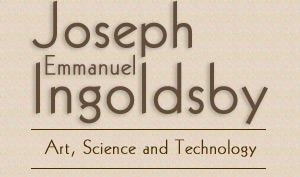
Over the years that I have looked at
the mosaic of landscapes, I have tried to understand
the interrelationship of geology, hydrology, soils, vegetation
and wildlife of the natural landscape and have studied
the
cultural landscape on the land. The Landscape Mosaics
began as a layered mapping of landscape using satellite,
aerial
and land based photography to microphotography to trace
out the mosaic of each ecosystem. The work has progressed
beyond
documentation to computer generated, site specific installations
used to educate and engage the public about threatened
landscapes and endangered species using art and technology
to explain
the science. The coastal installations are set in salt
marshes, along tidal rivers, within the sand plains and
dunes and
speak to the pattern and coloration of the landscape
through pixel panels, projections and kinetic sculpture
on a large
scale. The work exists outside of the context of the
museum, though panels have been exhibited and mapped keys
have been
set within the galleries to guide the public to the site
installations.
There is a body of visual work now completed and documented of the site specific,
ephemeral and time sensitive installations and the text is being written about
the process and product, elaborating on gallery talks and tours given in the
past. I am pleased that the work is being interpreted by the noted color theorist,
artist and academic-Doreen Balabanoff, whose work in colored light is internationally
known. Doreen will place the body of work in context with artists whose focus
is light and color-Josef Albers and James Turrell for example and artists who
use science as a means of communicating complex scientific principles to the
public as Alan Sonfist and Eric J. Heller. The color pixel palettes, projections
of color as a timeline in the marsh and the progressive color panels and leaves
can be theorized using art principles.
So too, can the color and pattern be described in scientific terms to denote
chemical composition, health, environmental factors, temperature, salinity, water
levels and stress. I am pleased to state that Stephen Smith, Ph.D. is uniquely
qualified to speak on the science of the coastal landscape and relate the color
and pattern change to specific phenomena. The next aerial images and studies
will speak to the death of the salt marsh along the New England coastline, in
what is termed 'salt marsh dieback'. This work by Stephen Smith is critical and
cutting edge research. My time line studies of the coast will assist him in determining
when the dieback began. Landscape Mosaics is an important and timely call for
public participation, understanding and focus on this critical and endangered
landscape. The book, describing new and alternative media installations, will
reach a wide audience. Art, science and technology join to issue a clarion call
for action. ...
Continued









